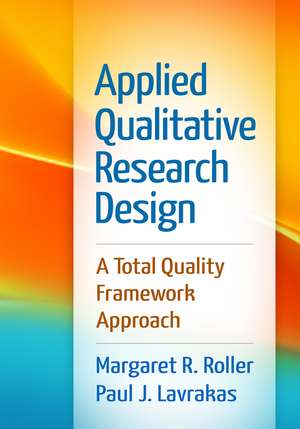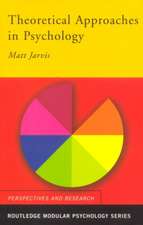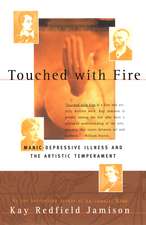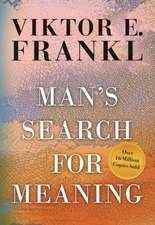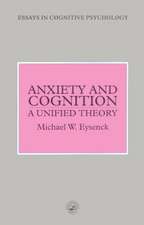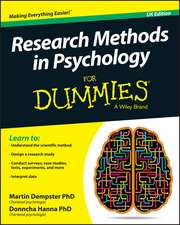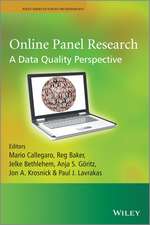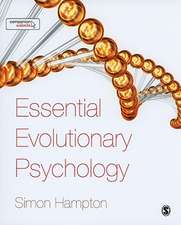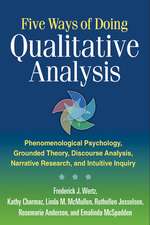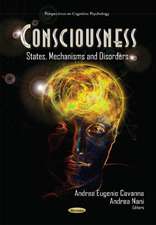Applied Qualitative Research Design: A Total Quality Framework Approach
Autor Margaret R. Roller, Paul J. Lavrakasen Limba Engleză Hardback – 3 mar 2015
This unique text provides a comprehensive framework for creating, managing, and interpreting qualitative research studies that yield valid and useful information. Examples of studies from a wide range of disciplines illustrate the strengths, limitations, and applications of the primary qualitative methods: in-depth interviews, focus group discussions, ethnography, content analysis, and case study and narrative research. Following a consistent format, chapters show students and researchers how to implement each method within a paradigm-neutral and flexible Total Quality Framework (TQF) comprising four interrelated components: Credibility, Analyzability, Transparency, and Usefulness. Unlike other texts that relegate quality issues to one or two chapters, detailed discussions of such crucial topics as construct validity, interresearcher reliability, researcher bias, and verification strategies are featured throughout. The book also addresses applications of the TQF to the writing, review, and evaluation of qualitative research proposals and manuscripts.
Pedagogical Features
*Summary tables that highlight important content, such as the application of a method to vulnerable or hard-to-reach populations.
*Case studies that illustrate TQF standards in practice for each method.
*Guidelines for effective documentation (via thick descriptions) of each type of study.
*End-of-chapter discussion topics, exercises, and suggested further reading and Web resources.
*Chapters open with a preview and close with a bulleted summary of key ideas.
*Extensive glossary.
2021 Winner--American Association for Public Opinion Research (AAPOR) Book Award
Pedagogical Features
*Summary tables that highlight important content, such as the application of a method to vulnerable or hard-to-reach populations.
*Case studies that illustrate TQF standards in practice for each method.
*Guidelines for effective documentation (via thick descriptions) of each type of study.
*End-of-chapter discussion topics, exercises, and suggested further reading and Web resources.
*Chapters open with a preview and close with a bulleted summary of key ideas.
*Extensive glossary.
2021 Winner--American Association for Public Opinion Research (AAPOR) Book Award
| Toate formatele și edițiile | Preț | Express |
|---|---|---|
| Paperback (1) | 386.22 lei 22-36 zile | +30.50 lei 6-12 zile |
| Guilford Publications – 2 apr 2015 | 386.22 lei 22-36 zile | +30.50 lei 6-12 zile |
| Hardback (1) | 682.31 lei 43-57 zile | |
| Guilford Publications – 3 mar 2015 | 682.31 lei 43-57 zile |
Preț: 682.31 lei
Preț vechi: 741.65 lei
-8% Nou
Puncte Express: 1023
Preț estimativ în valută:
130.60€ • 141.91$ • 109.78£
130.60€ • 141.91$ • 109.78£
Carte tipărită la comandă
Livrare economică 21 aprilie-05 mai
Preluare comenzi: 021 569.72.76
Specificații
ISBN-13: 9781462519088
ISBN-10: 1462519083
Pagini: 398
Dimensiuni: 178 x 254 x 28 mm
Greutate: 0.94 kg
Ediția:1
Editura: Guilford Publications
Colecția Guilford Press
ISBN-10: 1462519083
Pagini: 398
Dimensiuni: 178 x 254 x 28 mm
Greutate: 0.94 kg
Ediția:1
Editura: Guilford Publications
Colecția Guilford Press
Public țintă
Professional Practice & DevelopmentCuprins
1. Making Sense of the Human Experience with Qualitative Research
1.1. Introduction
1.2. Unique Attributes Associated with Qualitative Research
1.3. The Total Quality Framework and the Reason for This Book
1.4. Overall Organization of the Book and Its Chapters
1.5. The Glossary
2. The Total Quality Framework
Chapter Preview
2.1. Introduction
2.2. Paradigms and Frameworks
2.3. What Is the Total Quality Framework?
2.4. Applying the Total Quality Framework
2.5. Chapter Summary
Suggested Further Reading
3. Interview Method: In-Depth Interviews
Chapter Preview
3.1. Introduction
3.2. Four Modes of the In-Depth Interview Method
3.3. Applying the Total Quality Framework Approach to the In-Depth Interview Method
3.4. Chapter Summary
3.5. Exercises and Discussion Topics
Suggested Further Reading
Web Resource
4. Interview Method: Focus Group Discussions
Chapter Preview
4.1. Introduction
4.2. Three Modes of the Group Discussion Method
4.3. Applying the Total Quality Framework Approach to the Group Discussion Method
4.4. Chapter Summary
4.5. Exercises and Discussion Topics
Suggested Further Reading
Web Resources
5. Observation Method: Ethnography
Chapter Preview
5.1. Introduction
5.2. Ethnography in the Digital Age
5.3. Applying the Total Quality Framework Approach to Ethnography
5.4. Chapter Summary
5.5. Exercises and Discussion Topics
Suggested Further Reading
Web Resources
6. Qualitative Content Analysis
Chapter Preview
6.1. Introduction
6.2. Computer-Assisted Qualitative Content Analysis
6.3. Applying the Total Quality Framework Approach to Qualitative Content Analysis
6.4. Chapter Summary
6.5. Exercises and Discussion Topics
Web Resources
7. Multiple Methods in Case-Centered Approaches: Case Study and Narrative Research
Chapter Preview
7.1. Introduction
7.2. Process in Case-Centered Research
7.3. The Total Quality Framework Approach to Case-Centered Research
7.4. Chapter Summary
7.5. Exercises and Discussion Topics
Suggested Further Reading
Web Resource
8. The Total Quality Framework Research Proposal and Other Practical Applications of the Total Quality Framework
Chapter Preview
8.1. Introduction
8.2. Section-by-Section Discussion of the Total Quality Framework Research Proposal
8.3. Evaluating Proposals Using the Total Quality Framework
8.4. Related Uses of the Total Quality Framework in Reviewing Research Reports
8.5. Chapter Summary
Glossary
References
Author Index
Subject Index
About the Authors
1.1. Introduction
1.2. Unique Attributes Associated with Qualitative Research
1.3. The Total Quality Framework and the Reason for This Book
1.4. Overall Organization of the Book and Its Chapters
1.5. The Glossary
2. The Total Quality Framework
Chapter Preview
2.1. Introduction
2.2. Paradigms and Frameworks
2.3. What Is the Total Quality Framework?
2.4. Applying the Total Quality Framework
2.5. Chapter Summary
Suggested Further Reading
3. Interview Method: In-Depth Interviews
Chapter Preview
3.1. Introduction
3.2. Four Modes of the In-Depth Interview Method
3.3. Applying the Total Quality Framework Approach to the In-Depth Interview Method
3.4. Chapter Summary
3.5. Exercises and Discussion Topics
Suggested Further Reading
Web Resource
4. Interview Method: Focus Group Discussions
Chapter Preview
4.1. Introduction
4.2. Three Modes of the Group Discussion Method
4.3. Applying the Total Quality Framework Approach to the Group Discussion Method
4.4. Chapter Summary
4.5. Exercises and Discussion Topics
Suggested Further Reading
Web Resources
5. Observation Method: Ethnography
Chapter Preview
5.1. Introduction
5.2. Ethnography in the Digital Age
5.3. Applying the Total Quality Framework Approach to Ethnography
5.4. Chapter Summary
5.5. Exercises and Discussion Topics
Suggested Further Reading
Web Resources
6. Qualitative Content Analysis
Chapter Preview
6.1. Introduction
6.2. Computer-Assisted Qualitative Content Analysis
6.3. Applying the Total Quality Framework Approach to Qualitative Content Analysis
6.4. Chapter Summary
6.5. Exercises and Discussion Topics
Web Resources
7. Multiple Methods in Case-Centered Approaches: Case Study and Narrative Research
Chapter Preview
7.1. Introduction
7.2. Process in Case-Centered Research
7.3. The Total Quality Framework Approach to Case-Centered Research
7.4. Chapter Summary
7.5. Exercises and Discussion Topics
Suggested Further Reading
Web Resource
8. The Total Quality Framework Research Proposal and Other Practical Applications of the Total Quality Framework
Chapter Preview
8.1. Introduction
8.2. Section-by-Section Discussion of the Total Quality Framework Research Proposal
8.3. Evaluating Proposals Using the Total Quality Framework
8.4. Related Uses of the Total Quality Framework in Reviewing Research Reports
8.5. Chapter Summary
Glossary
References
Author Index
Subject Index
About the Authors
Notă biografică
Margaret R. Roller, MA, has been a research professional for 40 years. She is currently in private practice, where she works with some of the largest U.S. and global commercial and nonprofit organizations to find qualitative and quantitative research solutions. Ms. Roller has designed and conducted thousands of qualitative studies involving a wide assortment of methods, has presented and published numerous papers and articles on qualitative research design, and is the author of the widely read blog www.researchdesignreview.com. She serves on the exam development committee for the Marketing Research Association's Professional Researcher Certification.
Paul J. Lavrakas, PhD, a research psychologist, serves as a senior methodological research consultant for several public and private sector organizations. He is also a Senior Fellow at the independent research organization NORC at the University of Chicago, and a Visiting Scholar at Northern Arizona University. Dr. Lavrakas has used quantitative and qualitative research methods extensively throughout his more than 40 years as an active research practitioner. Past president of the American Association for Public Opinion Research, he served as Vice President and chief methodologist for Nielsen Media Research and was on the faculties of Northwestern University and Ohio State University. His many publications include, most recently, the coedited volume Online Panel Research: A Data Quality Perspective.
Paul J. Lavrakas, PhD, a research psychologist, serves as a senior methodological research consultant for several public and private sector organizations. He is also a Senior Fellow at the independent research organization NORC at the University of Chicago, and a Visiting Scholar at Northern Arizona University. Dr. Lavrakas has used quantitative and qualitative research methods extensively throughout his more than 40 years as an active research practitioner. Past president of the American Association for Public Opinion Research, he served as Vice President and chief methodologist for Nielsen Media Research and was on the faculties of Northwestern University and Ohio State University. His many publications include, most recently, the coedited volume Online Panel Research: A Data Quality Perspective.
Recenzii
"The presentation of a TQF that can be used both to evaluate published studies and create high-quality studies is a unique contribution to the field of qualitative inquiry. The TQF will be particularly helpful to graduate students who are venturing into qualitative research. The authors skillfully guide the reader through the various modes of data collection and analysis. They provide detailed guidance on key methodological issues, such as decisions regarding sample size, conducting telephone versus face-to-face interviews, and uses of focus groups."--Margaret J. Bull, PhD, RN, Marquette University College of Nursing
“A most original contribution that has been put together with the greatest of care. I applaud the authors for dividing each of the five methods chapters into well-organized sections that cover all aspects of the methods and explain how and why to apply TQF principles. Each chapter ends with an exceptionally effective case study to illustrate the concepts described. Other highlights of the book include the discussion topics and exercises to further readers’ thinking and understanding. This will be a great text for my senior-level honors seminar in qualitative research design."--Kimberley Ducey, PhD, Department of Sociology, University of Winnipeg, Canada
“This is an excellent text for a graduate qualitative research course, as well as a valuable reference for professionals. Well-written and easy to use, it provides a practical approach for students by incorporating exercises, case studies, web resources, and discussion topics. The latest research trends are discussed throughout, such as email IDIs, mobile ethnography, and synchronous versus asynchronous online discussion boards. The authors’ years of experience in conducting qualitative research make this book not only informative, but interesting to read.”--Candice R. Hollenbeck, PhD, Department of Marketing, University of Georgia
“A much-needed, pathbreaking book that will help set new standards of authoritativeness and excellence in qualitative research. The TQF is a powerful approach that can inform all types of research. I particularly like the authors' thorough attention to context, which they carefully explain in the introduction and develop throughout the book; this is one of the most important aspects of qualitative research."--Gerald Kosicki, PhD, School of Communication, The Ohio State University
“The writing is clear with helpful illustrative examples. Strengths of the book include its user-friendly narrative language and the effective applied exercises and case studies at the end of each chapter.”--Mary I. Dereshiwsky, PhD, Department of Educational Leadership, Northern Arizona University
-Roller and Lavrakas do a fantastic job of identifying strengths and limitations of each design model.--The Qualitative Report, 1/1/2018ƒƒThis book is suffused with the elements of what the authors call the total quality framework--namely credibility, analyzability, transparency, and usefulness. Each chapter is built around this framework so the important decisions needed throughout the stages of a qualitative research study are covered….Good use is made of chapter summaries and discussion topics and worked examples….Where appropriate, the advantages and disadvantages of preparing for, collecting, and analyzing data using technology is explored providing an additional dimension to the text. I would recommend this book to educators, researchers, and postgraduate students who are undertaking qualitative research.--Nurse Researcher, 1/1/2016ƒƒA hands-on, innovative, integrated methods text….The framework provides principles and practices for researchers to apply throughout the research process so that they are more likely to gather high-quality data, come to a more complete and valid interpretation of their data, and generate and present useful outcomes….The book contains chapters on each of the main qualitative methods: in-depth interviews, focus groups, ethnography, content analysis, and case studies. The authors, in keeping with the integrated approach of their model, in parallel fashion apply each of the four elements of the framework to each technique and its particular requirements. This feature alone is a major strength of this work. But each method chapter contains some additional valuable elements, such as skills researchers must bring to that particular technique, strengths and weaknesses of that approach, and ethical considerations. The authors also provide a case study at the end of each chapter that is an example of a research project utilizing the TQF standards for that specific method. If that weren't enough, the final chapter focuses on how to use the TQF to assess the quality of qualitative studies done by others--or at least, grant or project proposals….The book itself is very well organized and well written….Section headings and parallel organization make it easy to jump back and forth, and chapter summaries along with an extensive glossary likewise aid the reader….Overall, Roller and Lavrakas have done social science scholars of all stripes a big favor.--Public Opinion Quarterly, 5/1/2016ƒƒReaders will benefit from the book's organization, with its similarly formatted chapters, and from the frequent examples, bulleted lists, diagrams, and annotated bibliographies at the end of the chapters. The overall presentation facilitates comprehension of what can be, for some, difficult content….This is an outstanding adjunctive resource for those using particular research paradigms (e.g., grounded theory, phenomenology, ethnography, etc.) and for those in need of a framework to ensure rigor in any qualitative research study. The book provides a new, fresh, and meticulous approach to creating, understanding, using, and evaluating qualitative research. (review by Martha M. Scheckel, PhD, RN)--Doody's Review Service, 7/10/2015“A most original contribution that has been put together with the greatest of care. I applaud the authors for dividing each of the five methods chapters into well-organized sections that cover all aspects of the methods and explain how and why to apply TQF principles. Each chapter ends with an exceptionally effective case study to illustrate the concepts described. Other highlights of the book include the discussion topics and exercises to further readers’ thinking and understanding. This will be a great text for my senior-level honors seminar in qualitative research design."--Kimberley Ducey, PhD, Department of Sociology, University of Winnipeg, Canada
“This is an excellent text for a graduate qualitative research course, as well as a valuable reference for professionals. Well-written and easy to use, it provides a practical approach for students by incorporating exercises, case studies, web resources, and discussion topics. The latest research trends are discussed throughout, such as email IDIs, mobile ethnography, and synchronous versus asynchronous online discussion boards. The authors’ years of experience in conducting qualitative research make this book not only informative, but interesting to read.”--Candice R. Hollenbeck, PhD, Department of Marketing, University of Georgia
“A much-needed, pathbreaking book that will help set new standards of authoritativeness and excellence in qualitative research. The TQF is a powerful approach that can inform all types of research. I particularly like the authors' thorough attention to context, which they carefully explain in the introduction and develop throughout the book; this is one of the most important aspects of qualitative research."--Gerald Kosicki, PhD, School of Communication, The Ohio State University
“The writing is clear with helpful illustrative examples. Strengths of the book include its user-friendly narrative language and the effective applied exercises and case studies at the end of each chapter.”--Mary I. Dereshiwsky, PhD, Department of Educational Leadership, Northern Arizona University
Descriere
This unique text provides a comprehensive framework for creating, managing, and interpreting qualitative research studies that yield valid and useful information. Examples of studies from a wide range of disciplines illustrate the strengths, limitations, and applications of the primary qualitative methods: in-depth interviews, focus group discussions, ethnography, content analysis, and case study and narrative research.
